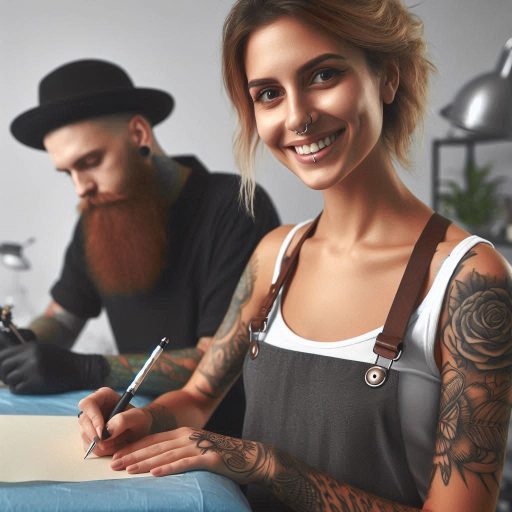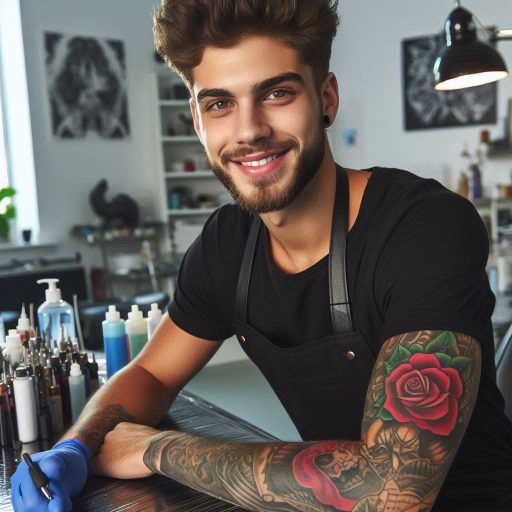Introduction
Event design encompasses the planning and execution of events, focusing on aesthetics and guest experience.
It involves creating visually appealing spaces that foster connection and engagement.
As the event landscape evolves, staying updated on design trends becomes essential for success.
Understanding current trends helps event planners deliver unique and memorable experiences.
Trends reflect changing audience preferences and technological advancements, enabling planners to innovate.
Ignoring these shifts may result in stale events that fail to impress guests.
Several key event design trends are shaping the industry in the United States.
Sustainability continues to gain traction, with planners opting for eco-friendly materials and practices.
Attendees increasingly prefer events that reflect their values, leading to more conscious choices.
Another prominent trend is the use of immersive experiences.
Event designers create environments that transport guests into different worlds, using technology and creative decor.
This approach enhances engagement and leaves a lasting impression.
Flexible layouts also play a significant role in modern event design.
Planners are moving away from traditional seating arrangements, opting for adaptable spaces.
These layouts promote interaction and cater to diverse activities during events.
Color psychology is another trend influencing event design.
Designers are choosing color palettes that evoke specific emotions, enhancing the overall atmosphere.
Thoughtful color choices can create an inviting and memorable experience.
Lastly, personalization remains a crucial element in event design.
Customizing experiences based on attendee preferences helps create a deeper connection.
Transform Your Career Today
Unlock a personalized career strategy that drives real results. Get tailored advice and a roadmap designed just for you.
Start NowEvent planners are increasingly leveraging data to tailor experiences and engage guests effectively.
In fact, event design is a dynamic field that requires awareness of emerging trends.
Staying informed enables planners to create impactful events that resonate with attendees.
The top trends reflect a blend of sustainability, technology, and personalization, shaping the future of event design in the United States.
Sustainable Event Design
One of the top event design trends in the United States is the focus on sustainability.
Event planners are increasingly incorporating eco-friendly practices and materials into their designs.
Incorporating eco-friendly practices and materials
Event planners are making conscious decisions to use recyclable decor and reduce waste in their events.
This includes opting for biodegradable materials and avoiding single-use plastics.
Using recyclable decor and reducing waste
By using recyclable decor such as paper bunting, bamboo cutlery, and glassware, event planners are able to reduce the environmental impact of their events.
They also work with vendors who prioritize sustainability.
Importance of sustainability in the event industry
As the world becomes more environmentally conscious, the event industry is following suit.
Sustainable event design not only reduces the carbon footprint of events but also promotes a positive image for brands and organizations.
Event attendees are increasingly looking for ways to participate in events that align with their values, including sustainability.
By incorporating sustainable practices into event design, planners can attract a larger audience and create a memorable experience for attendees.
In fact, sustainable event design is a key trend in the United States, driven by the demand for eco-friendly solutions and a growing awareness of environmental issues.
Event planners who embrace sustainability in their designs are not only meeting the expectations of their clients but also contributing to a better future for the planet.
Read: Tattoo Design Trends: What’s Hot in 2024
Virtual and Hybrid Events
Virtual and hybrid events have become increasingly popular in the United States, especially in the wake of the COVID-19 pandemic.
Organizers have had to adapt to the new normal, turning to virtual and hybrid solutions to ensure that events can still take place while keeping attendees safe.
Rise in Popularity of Virtual and Hybrid Events
The restrictions imposed by the pandemic have led to a surge in virtual and hybrid events.
Transform Your Career Today
Unlock a personalized career strategy that drives real results. Get tailored advice and a roadmap designed just for you.
Start NowTraditional in-person gatherings have been replaced by online platforms, allowing people to connect and engage from the comfort of their own homes.
This shift has not only ensured the continuation of events but has also opened up new opportunities for reaching a wider audience.
Utilizing Technology for Immersive Experiences
With virtual and hybrid events, technology plays a crucial role in creating immersive experiences for attendees.
Event organizers are leveraging tools such as virtual reality, live streaming, and interactive platforms to replicate the in-person event experience as closely as possible.
These technologies allow for networking, presentations, and even entertainment to be delivered in innovative and engaging ways.
Incorporating Virtual Elements into Traditional Events
Many event planners are now incorporating virtual elements into their traditional events to enhance the overall experience.
This may include offering a virtual component for remote attendees, providing live streams of sessions or performances, or integrating interactive features that allow for virtual participation.
By combining both virtual and in-person elements, organizers can create a dynamic and inclusive event environment.
Overall, the rise of virtual and hybrid events in the United States reflects a shift towards more flexible and innovative event design.
As technology continues to evolve, so too will the ways in which events are planned and executed, ensuring that attendees can engage and connect in new and exciting ways.
Read: Must-Have Tools for Every Event Designer
Biophilic Design
Biophilic design is transforming event spaces across the United States.
This approach integrates nature-inspired elements into various settings, enhancing the overall experience for attendees.
Incorporating Nature-Inspired Elements into Event Spaces
Event planners now prioritize incorporating natural elements into their designs.
Using organic shapes, earthy color palettes, and natural textures fosters a calming atmosphere.
Items like wooden tables, stone centerpieces, and plant accents add warmth and appeal.
This connection to nature creates inviting spaces that encourage social interaction and creativity.
Creating a Connection to the Outdoors Through Greenery and Natural Materials
Integrating greenery is essential for biophilic design.
Event spaces with live plants, flowers, and water features create a refreshing ambiance.
Utilizing natural materials like wood, stone, and clay enhances this connection to the outdoors.
Transform Your Career Today
Unlock a personalized career strategy that drives real results. Get tailored advice and a roadmap designed just for you.
Start NowOutdoor events capitalize on natural landscapes, providing stunning backdrops for gatherings.
These designs remind attendees of nature’s beauty and promote relaxation.
Benefits of Biophilic Design for Attendees’ Well-Being
Biophilic design significantly impacts attendees’ well-being.
Studies show that natural elements reduce stress and improve focus.
By creating a soothing environment, event planners enhance attendees’ overall experience.
Participants feel more energized and engaged in biophilic spaces.
This approach also promotes creativity and collaboration, leading to more productive outcomes.
As a result, events become memorable experiences rather than just gatherings.
In a nutshell, biophilic design elevates event planning in the United States.
By incorporating nature-inspired elements, creating outdoor connections, and enhancing well-being, planners create impactful experiences.
This trend is set to grow, as attendees increasingly seek environments that nurture their connection to nature.
Embracing biophilic design not only beautifies spaces but also enriches the human experience, making events unforgettable.
Read: Steps to Becoming a Professional Tattoo Artist
Statement Lighting
One of the top event design trends in the United States is Statement Lighting.
Let’s delve into how event planners are using creative and bold lighting designs to enhance event spaces.
Utilizing Creative and Bold Lighting Designs
Event planners are getting more creative with lighting designs to make a statement.
They are using innovative techniques to create visually stunning effects that captivate attendees.
Incorporating LED, Neon, and Programmable Lights
LED lights are energy-efficient and versatile, allowing designers to create dynamic lighting displays.
Neon lights add a retro vibe, while programmable lights can change colors and patterns to suit different event themes.
Setting the Mood and Atmosphere
Lighting plays a crucial role in setting the mood and atmosphere of an event.
Transform Your Career Today
Unlock a personalized career strategy that drives real results. Get tailored advice and a roadmap designed just for you.
Start NowSoft, warm lighting can create a cozy and intimate ambiance, while bright, colorful lights can energize and excite guests.
Event planners are leveraging the power of lighting to transform event spaces and enhance the overall experience for attendees.
By incorporating statement lighting designs, they are able to create unforgettable moments that leave a lasting impression.
Read: Creative Tips for Aspiring Event Designers

Inclusive and Diverse Decor
When it comes to event design trends in the United States, one of the most prominent shifts in recent years has been the emphasis on inclusivity and diversity in decor.
Event planners are now focusing on creating spaces that celebrate the richness of different cultures, backgrounds, and identities.
Here are some key points to consider:
Embracing diversity and inclusivity in event design
Event planners are increasingly recognizing the importance of creating spaces that are welcoming to attendees from all walks of life.
This means incorporating elements of different cultures, traditions, and perspectives into the decor to create a more inclusive environment.
Representing different cultures, backgrounds, and identities in decor
From incorporating cultural symbols and decorations to showcasing artwork and artifacts from diverse backgrounds, event designers are finding creative ways to represent the multitude of identities that make up our society.
This not only adds visual interest to the decor but also sends a powerful message of acceptance and respect for all attendees.
Importance of creating welcoming and inclusive environments for all attendees
At the heart of inclusive event design is the idea of creating spaces where everyone feels valued and respected.
By incorporating elements that reflect the diversity of attendees, event planners can foster a sense of belonging and create a more positive and memorable experience for all.
Basically, inclusive and diverse decor is not just a trend in event design – it’s a movement towards creating more welcoming and inclusive spaces for all attendees.
By embracing diversity and incorporating elements from various cultures and backgrounds, event planners can make a powerful statement about the importance of inclusivity and respect in today’s society.
Minimalist and Modern Design
Trend towards clean lines, simple decor, and minimalist aesthetics
Minimalist and modern design have become increasingly popular in event planning in the United States.
Event designers are embracing the simplicity and elegance that this trend offers, creating stunning and sophisticated atmospheres for various occasions.
One of the key elements of minimalist design is the trend towards clean lines and simple decor.
This approach focuses on decluttering the space and creating a sense of openness and tranquility.
By incorporating minimalistic elements like neutral color palettes, sleek furniture, and unadorned walls, event planners are able to achieve a clean and sophisticated look.
Transform Your Career Today
Unlock a personalized career strategy that drives real results. Get tailored advice and a roadmap designed just for you.
Start NowIncorporating modern and sleek furnishings for a contemporary look
Moreover, modern furnishings are being used to enhance the contemporary feel of events.
From minimalist chairs and tables to sleek lighting fixtures, incorporating modern pieces adds a touch of sophistication and style to the overall design.
By selecting furniture with clean lines and a streamlined silhouette, event designers are able to create a cohesive and visually appealing space.
Balancing minimalism with impactful design elements
Furthermore, event planners are finding ways to balance minimalism with impactful design elements.
While keeping the overall design simple and understated, they are incorporating statement pieces that draw attention and create focal points.
This could include eye-catching centerpieces, bold artwork, or unique installations that add a touch of drama and excitement to the event space.
Essentially, the minimalist and modern design trend in event planning is characterized by its focus on clean lines, simple decor, and sleek furnishings.
By striking a balance between minimalism and impactful design elements, event designers are able to create contemporary and sophisticated atmospheres that leave a lasting impression on guests.
Interactive Experiences
Creating immersive and interactive experiences for attendees
Interactive experiences have become a major trend in event design, as they create a unique and engaging atmosphere for attendees.
By incorporating elements like photo booths, VR games, and interactive installations, event planners can provide a more interactive and memorable experience for guests.
Incorporating elements like photo booths, VR games, and interactive installations
One of the key benefits of interactive experiences is the ability to engage attendees in a way that traditional events cannot.
By allowing guests to participate in activities and interact with their surroundings, event planners can create a more dynamic and engaging event environment.
Importance of engaging attendees and making events memorable
Photo booths have become a popular addition to events, allowing guests to take fun and memorable photos that they can share on social media.
This not only creates a personalized touch to the event but also encourages attendees to interact with each other and create lasting memories.
Virtual reality (VR) games are another interactive element that has been gaining popularity in event design.
By incorporating VR games, event planners can provide guests with a unique and immersive experience that they will remember long after the event is over.
Interactive installations, such as interactive art displays or touch-screen kiosks, are also becoming more common in event design.
These installations not only provide guests with an interactive and engaging experience but also serve as a conversation starter and focal point for the event.
Ultimately, the importance of interactive experiences in event design lies in their ability to engage attendees and make events more memorable.
By creating immersive and interactive environments, event planners can ensure that guests have a unique and unforgettable experience that will keep them talking about the event long after it’s over.
Transform Your Career Today
Unlock a personalized career strategy that drives real results. Get tailored advice and a roadmap designed just for you.
Start NowPersonalized Touches
Customizing event experiences to reflect the preferences and interests of attendees
Personalization is becoming a leading trend in event design across the United States.
By customizing event experiences, planners can better reflect the preferences and interests of attendees.
This approach enhances engagement and fosters a deeper connection between guests and the event.
Incorporating personalization through custom branding, decor, and activities
Custom branding is a key aspect of personalization.
Event planners can create unique logos, color schemes, and themes that resonate with the target audience.
This tailored branding extends to promotional materials and digital content, making every aspect feel cohesive and inviting.
Importance of creating a unique and memorable experience for each guest
Decor also plays a vital role in personalization.
Using customized decorations, such as centerpieces, signage, and table settings, can transform a venue.
These elements should align with the event’s theme while catering to the specific tastes of attendees.
For example, incorporating colors or motifs that resonate with the guests can create a welcoming atmosphere.
Activities and experiences should also be personalized.
Offering interactive experiences tailored to guests’ interests enhances participation and enjoyment.
This could include workshops, personalized photo booths, or interactive displays that engage attendees in meaningful ways.
Creating a unique and memorable experience is crucial for each guest.
When attendees feel valued and recognized, they are more likely to share positive feedback.
This word-of-mouth promotion is invaluable in today’s competitive event landscape.
Therefore, personalized touches in event design significantly enhance guest experiences.
Custom branding, decor, and activities ensure that each attendee feels special and engaged.
These elements contribute to an unforgettable event that resonates long after it concludes.
Embracing personalization is essential for any event planner looking to stand out and create lasting impressions.
Transform Your Career Today
Unlock a personalized career strategy that drives real results. Get tailored advice and a roadmap designed just for you.
Start NowConclusion
As we look back at the top event design trends in the United States, it is clear that creativity and innovation are key factors in creating memorable experiences for attendees.
Staying ahead of the curve and incorporating these trends into future events is crucial for event professionals to stay relevant in a competitive industry.
We encourage event professionals to embrace new ideas, experiment with different concepts, and push the boundaries of traditional event design to create truly unique and impactful experiences for their clients and guests
Event design trends continually shape the industry in the United States.
This year’s trends highlight personalization, sustainability, and technology integration.
These elements enhance attendee experiences and create memorable events.
Personalization remains a top priority.
Tailoring events to individual preferences fosters deeper connections.
Custom experiences, such as unique seating arrangements or personalized swag, make a lasting impression.
Attendees appreciate when their interests are considered, leading to higher engagement levels.
Sustainability is essential in event design. More professionals are adopting eco-friendly practices.
Using recyclable materials and minimizing waste reflects a commitment to the environment.
Sustainable events attract conscientious attendees and enhance brand reputation.
Technology integration continues to evolve.
Virtual and hybrid events have transformed how people connect.
Utilizing innovative tools like AR and VR creates immersive experiences.
Live streaming expands reach and engages audiences beyond physical venues.
Staying innovative and creative is crucial for event success.
The industry evolves rapidly, requiring professionals to adapt.
Embracing change keeps events fresh and relevant.
Transform Your Career Today
Unlock a personalized career strategy that drives real results. Get tailored advice and a roadmap designed just for you.
Start NowIncorporating new ideas encourages creativity and attracts diverse audiences.
Event professionals should actively integrate these trends into their future projects.
Experimenting with personalization, sustainability, and technology can elevate events.
Consider audience preferences, environmental impacts, and emerging tech to craft unforgettable experiences.
[E-Books for Sale]
The Big Book of 500 High-Paying Jobs in America: Unlock Your Earning Potential
$19.99 • 500 High-Paying Jobs • 330 pages
Explore 500 high-paying jobs in America and learn how to boost your career, earn more, and achieve success!
See All 500 High-Paying Jobs of this E-Book
1001 Professions Without a Degree: High-Paying American Jobs You Can Start Now
$19.99 • 1001 Professions Without a Degree • 174 pages
Discover 1001 high-paying jobs without a degree! Unlock career tips, skills, and success strategies for just $19.99!




